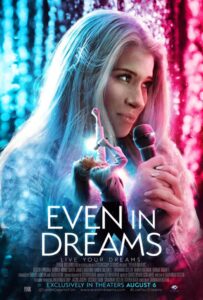TV & MOVIES
Adapting Non-Fiction Literature to the Screen: A Comparison of “The Social Network” and “Moneyball

In recent years, Hollywood has produced a number of successful films based on non-fiction literature. One of the challenges in adapting such works is to remain true to the source material while also creating a compelling cinematic experience. In this article, we will examine two such films, “The Social Network” and “Moneyball,” and compare the ways in which they handle this challenge.
“The Social Network” is based on the book “The Accidental Billionaires” by Ben Mezrich, which tells the story of the founding of Facebook by Mark Zuckerberg and his associates. The film, directed by David Fincher, uses a non-linear narrative structure to tell the story, jumping back and forth in time between different events. This technique is effective in capturing the chaotic energy of the early days of Facebook and also adds tension to the legal battles that arise later in the story.
In contrast, “Moneyball” is based on the book “Moneyball: The Art of Winning an Unfair Game” by Michael Lewis, which explores the methods used by Oakland A’s general manager Billy Beane to assemble a competitive baseball team on a limited budget. The film, directed by Bennett Miller, takes a more straightforward approach, following a linear narrative that closely mirrors the structure of the book.
One of the challenges in adapting “Moneyball” was to make the technical aspects of baseball strategy accessible to a general audience. The filmmakers achieved this by using a number of visual aids, such as on-screen graphics and animation, to explain the concepts. This helps to make the film more engaging for viewers who may not be familiar with the intricacies of baseball.
Both “The Social Network” and “Moneyball” are successful in adapting non-fiction literature to the screen, but they take different approaches to the task. “The Social Network” uses a non-linear narrative structure to capture the chaotic energy of its subject matter, while “Moneyball” takes a more straightforward approach and uses visual aids to explain complex concepts. Ultimately, the success of each film is due to its ability to remain true to the source material while also creating an engaging cinematic experience.
One of the most interesting aspects of the adaptation of these two books is the different approaches taken by their respective filmmakers. While both movies were directed by David Fincher, they are quite different in tone and style.
“The Social Network” is a fast-paced, dialogue-driven film that focuses on the drama and interpersonal relationships behind the creation of Facebook. The screenplay, written by Aaron Sorkin, is known for its witty and rapid-fire dialogue, which helps to keep the viewer engaged throughout the film.
“Moneyball,” on the other hand, is a more contemplative film that focuses on the ideas and strategies behind Billy Beane’s approach to building a winning baseball team. The screenplay, written by Steven Zaillian and Aaron Sorkin, takes a more measured approach, with fewer characters and less frenetic pacing than “The Social Network.”
Despite these differences, both films are successful adaptations of their source material. “The Social Network” captures the drama and tension of the early days of Facebook, while “Moneyball” effectively conveys the complexity and ingenuity of Billy Beane’s approach to building a winning baseball team.
In conclusion, the adaptation of non-fiction literature to the screen is a complex and challenging process, but when done well, it can result in compelling and thought-provoking films that entertain and inform audiences. “The Social Network” and “Moneyball” are two excellent examples of this, and they serve as a testament to the power of non-fiction literature to inspire and captivate us, both on the page and on the screen.
Perspective from Studio Carry On Harry Columnists :
Perspective come from discussion between two seasoned columnists at Studio Carry On Harry, David Lee and Rachel Smith :
David Lee: Rachel, I think the adaptation of non-fiction literature to the screen is a fascinating topic. Two films that come to mind are “The Social Network” and “Moneyball”. Both of these films were adapted from non-fiction literature, and both were critically acclaimed. However, they are very different films. What are your thoughts on this topic?
Rachel Smith: I agree, David. I think that adapting non-fiction literature to the screen is a difficult task. You have to balance the factual information with the creative aspects of filmmaking. “The Social Network” and “Moneyball” are great examples of how to do this successfully.
David Lee: Absolutely. “The Social Network” was adapted from the book “The Accidental Billionaires” by Ben Mezrich. The film tells the story of the founding of Facebook by Mark Zuckerberg and his co-founders. What I found most impressive about this film was how it managed to capture the essence of the story while still being entertaining and engaging.
Rachel Smith: I completely agree. Aaron Sorkin’s screenplay for “The Social Network” was superb. He took the factual information from the book and turned it into a compelling story that was easy to follow. The film was also beautifully shot, with excellent performances from the cast.
David Lee: “Moneyball” is another example of how to adapt non-fiction literature to the screen. The film was based on the book “Moneyball: The Art of Winning an Unfair Game” by Michael Lewis. The story is about Billy Beane, the general manager of the Oakland A’s, who uses statistical analysis to build a winning team on a limited budget.
Rachel Smith: “Moneyball” is a great example of how to take a complex subject and make it accessible to a wide audience. The film managed to explain the concept of sabermetrics in a way that was easy to understand, while still being entertaining. Brad Pitt’s performance as Billy Beane was excellent, and the film was well-directed by Bennett Miller.
David Lee: One of the challenges of adapting non-fiction literature to the screen is deciding what to include and what to leave out. Both “The Social Network” and “Moneyball” had to condense a lot of information into a two-hour film.
Rachel Smith: That’s true, David. But I think that both films managed to include the most important information while still telling a compelling story. Of course, there were some changes made for dramatic effect, but that’s to be expected in any adaptation.
David Lee: Overall, I think that “The Social Network” and “Moneyball” are great examples of how to adapt non-fiction literature to the screen. Both films were well-received critically and commercially, and they managed to tell compelling stories while staying true to the facts. It’s not an easy task, but when it’s done well, the results can be spectacular.
Rachel Smith: I couldn’t agree more, David. Adapting non-fiction literature to the screen is a challenging task, but “The Social Network” and “Moneyball” show that it can be done successfully. These films provide an excellent example of how to balance factual information with creative storytelling, and I think that future filmmakers can learn a lot from them.
TV & MOVIES
The Rise of OTT as the New Box Office

The Rise of OTT as the New Box Office
Once viewed as an alternative platform for offbeat cinema, OTT streaming has now become the new box office. Services like Netflix, Amazon Prime Video, Disney+ Hotstar, and JioCinema have blurred the lines between traditional film releases and digital premieres. Films now transition from theatre to streaming in record time, capitalizing on binge-hungry audiences. For stars, producers, and even entertainment journalists, success metrics have changed — viewership minutes are replacing weekend grosses. The result: OTT sits at the center of India’s entertainment economy, steering ad spends, influencing production budgets, and shaping the stories greenlit each quarter.
Entertainment News in the Age of Instant Streaming
In the digital ecosystem, entertainment journalism has transformed from the red carpet to the real-time feed. Every Friday now brings not just a theatrical release but multiple digital premieres across languages. Reporters have pivoted from set visits to decoding content strategy and from star gossip to viewership data. The new buzzwords: streaming engagement, AI-driven recommendations, and cross-platform visibility. Newsrooms like LiveNewsVault Entertainment and partners at CarryOnHarry now run OTT review dashboards, instant alerts, and trend explainers as core products.
Regional Powerhouses Take the Lead
India’s OTT revolution is inherently multilingual. Regional industries — Tamil, Telugu, Malayalam, Bengali, and Marathi — are not secondary players but growth engines. Breakout series and films prove that strong storytelling transcends language; national audiences discover talent via dubs, subs, and algorithmic curation. As fame democratizes, coverage widens: interviews and reviews from Kochi to Kolkata now trend pan-India within hours.
From Red Carpets to Reels: Celebrity PR Gets a Digital Makeover
Public relations and celebrity branding have undergone a dramatic shift. Actors cultivate fan engagement through behind-the-scenes reels, live Q&As, and platform-native collaborations. Reporters have become hybrid creators — part journalist, part analyst. Innovative campaigns (password-gated “secret reels,” ARG-style teasers, fan-first premieres) show how marketing has evolved for the scroll era: faster, smarter, and multimedia-first.
The Future: Where Algorithms Meet Art
As AI-driven curation becomes integral to discovery, the future of entertainment news is personalization. Editors increasingly collaborate with analytics to predict which categories — crime thriller, social drama, or period biopic — will surge. Independent desks leverage similar tools to deliver hyper-personalized reviews, streaming alerts, and creator spotlights tailored to micro-audiences. The story no longer ends at the screen; it continues in how we cover the screen.
Conclusion: The Digital Stage Expands
OTT has reinvented both entertainment and journalism. What used to be a Friday column is now a seven-day newsroom linking creators, audiences, and platforms through one digital thread. The future of entertainment news is streaming-first, global-minded, and endlessly connected. The screens may be smaller — the stories are larger than ever.
TV & MOVIES
Bollywood’s British Leap: Cross‑Border Filming and the New Cinematic Frontier

Bollywood’s British Leap: Cross‑Border Filming and the New Cinematic Frontier
Behind this move lie incentives, economic strategy, and symbolic ambition. The question now: can Bollywood transplant its cinematic heart without losing its cultural soul?
The announcement came via the corridors of power: British Prime Minister Keir Starmer revealed during his India visit that three Bollywood productions will be made in Britain from early 2026.
Central to the pact is Yash Raj Films, which had paused major UK shoots for eight years, now returning as the anchor for this cross‑border experiment.
Expected to generate around 3,000 jobs, the deal is as much diplomatic optics as industrial infrastructure.For Bollywood observers, it is a litmus test: can Indian storytelling adapt to foreign soil without feeling foreign?
The Vanguard: Yash Raj Leads the Charge
Yash Raj Films (YRF), long a stalwart of big‑scale Hindi cinema, is the first name attached to this UK dream.With its track record of lavish musicals, romance, and action — from Dilwale Dulhania Le Jayenge to Pathaan — YRF carries both brand capital and creative weight.Their reentry into Britain marks more than nostalgia: it signals a strategic pivot toward outward expansion.
But leading this frontier is no easy role. They will need to balance spectacle and intimacy, and reconcile Indian aesthetics with British logistical realities.
Incentives, Co‑Productions & Tax Mechanics
The financial architecture is critical. As part of the agreement, Indian and UK bodies will pursue co‑production treaties, resource sharing accords, and reciprocal benefits.UK’s creative industries already contribute around £12 billion annually and support ~90,000 jobs — the British case is that international shoots strengthen local ecosystems.Rebates, studio partnerships (e.g. Pinewood, Elstree) and infrastructure support are expected to sweeten the deal.But the devil is in execution: permissions, union rules, import logistics, film quotas, and cross‑border revenue sharing could complicate creative freedom.
Opportunities (and Tensions) for UK Crews & Cultural Exchange
Locally, film professionals in the UK see a surge of opportunity: from lighting crews to VFX houses, from set construction to post‑production houses. The promise of roughly 3,000 new roles is a significant magnet.Yet the collaboration demands sensitivity: will Indian team leads integrate, or default to bringing crews from India? Will local talent be collaborators or footnotes?
There is also the cultural friction of narratives: Indian stories often depend on linguistic nuance, emotional idioms, and socio‑cultural reference. Translating such texture across geographies — e.g. a diasporic scene set in Leicester, or a heritage plot in rural India but shot in the Cotswolds — requires careful calibration.
Comparative Lens: UK, US, Middle East & Southeast Asia
Bollywood has already flirted with foreign stages: films set in New York, Dubai, London, Malaysia, and Bangkok. But these were episodic — song sequences or a few days’ location work.
What’s novel now is full production immersion: shooting entire blocks abroad, and using foreign studios as main hubs rather than occasional backdrops.The US has always been a lure, but bureaucratic cost, limited subsidy infrastructure, and union complexity have tempered enthusiasm. The Middle East (Dubai, Abu Dhabi) offers tax breaks and modern facilities, but lacks the anchor of diaspora and cultural familiarity. Southeast Asia has drawn Indian shoots for lower cost, but not the prestige of UK or US branding.The UK’s strength lies in infrastructure, cultural connectivity (Indian diaspora, shared colonial history), institutional film bodies, and scenic legacy. If it succeeds, we may witness a regional shift: Bollywood’s second “home” might well be London.
For now, the journey begins: the lens crosses the sea, and the world watches whether Bollywood’s soul can find new soil and still breathe.
-

 Editor's Choice2 months ago
Editor's Choice2 months agoRanveer Singh and Deepika Padukone Reunite for New Romantic Comedy
-

 Editor's Choice7 months ago
Editor's Choice7 months agoReview: Rekhachithram (2025) – A Masterful Blend of Mystery and Redemption
-

 Authors and Artists4 years ago
Authors and Artists4 years agoCreate Your Miraculous Life: It’s Never Too Late Wendy L. Darling
-

 People's Choice3 months ago
People's Choice3 months agoBollywood in August 2025: A Landscape of Sequels, Social Commentary, and Star Power







